The Samsung Galaxy Note7 (S820) Review
by Joshua Ho on August 16, 2016 9:00 AM ESTSystem Performance
As previously mentioned this year a major goal of ours was to focus on benchmarks with metrics that better indicate user experience rather than being subject to additional layers of indirection in addition to updating our previously used benchmarks. Probably one of the hardest problems to tackle from a testing perspective is capturing what it means to have a smooth and fast phone, and with the right benchmarks you can actually start to test for these things in a meaningful way instead of just relying on a reviewer’s word. In addition to new benchmarks, we’ve attempted to update existing types of benchmarks with tests that are more realistic and more useful rather than simple microbenchmarks that can be easily optimized against without any meaningful user experience improvements. With that said, let's get into the results.
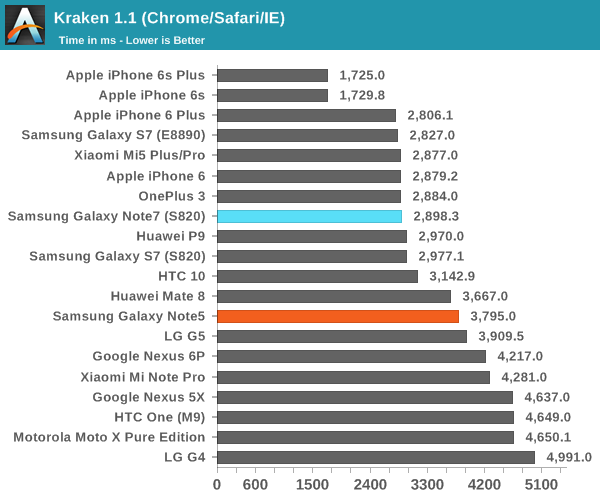
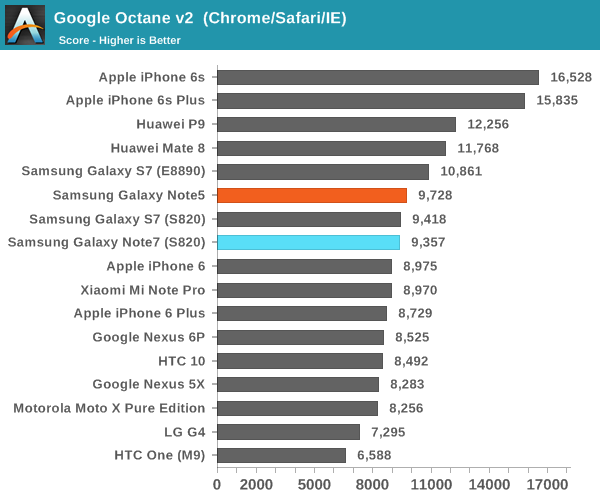
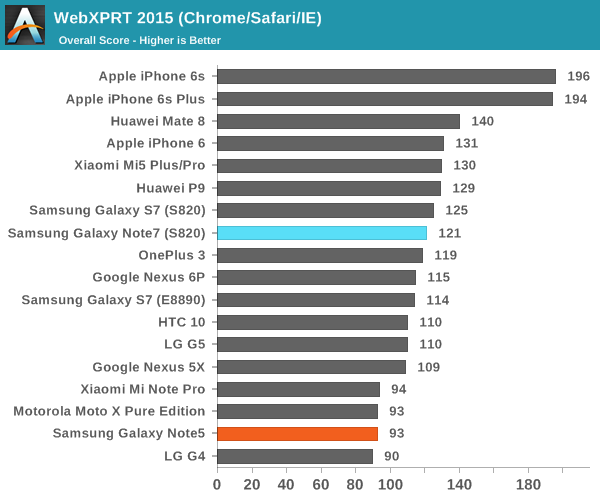
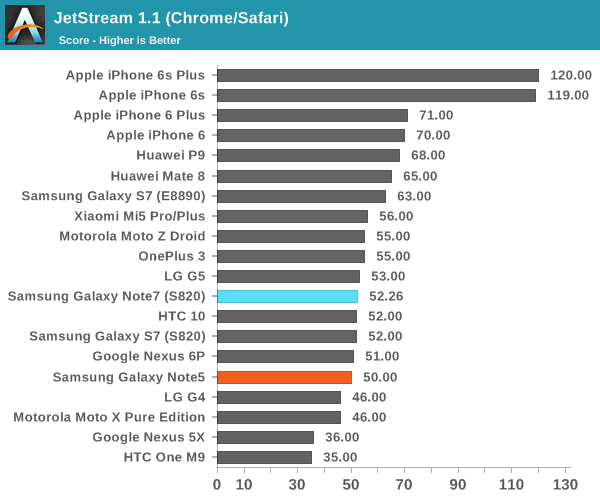

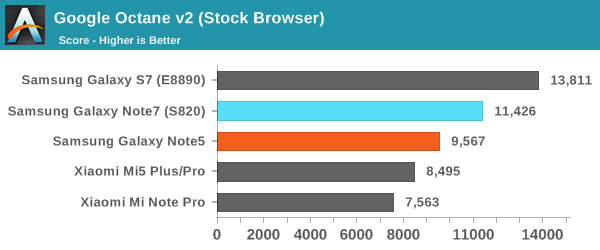
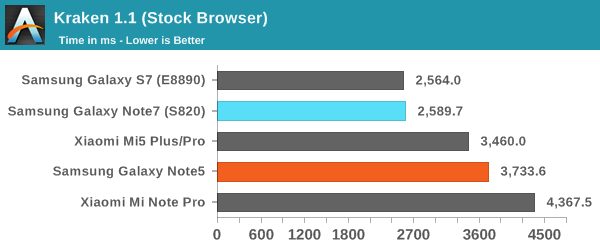
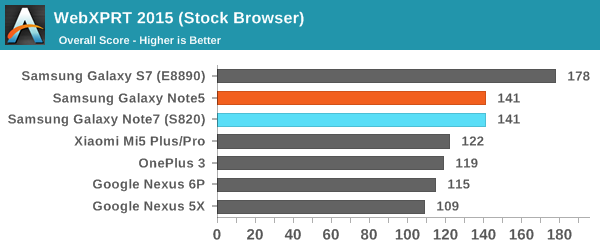
Browser performance here is pretty much in line with expectations as pretty much every OEM using Snapdragon 820 is going to be using the same basic BSP and most of the optimizations here are going to be done by Qualcomm rather than the OEMs.
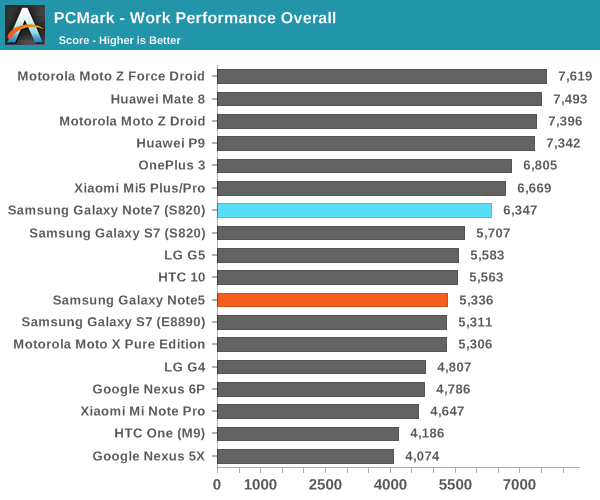
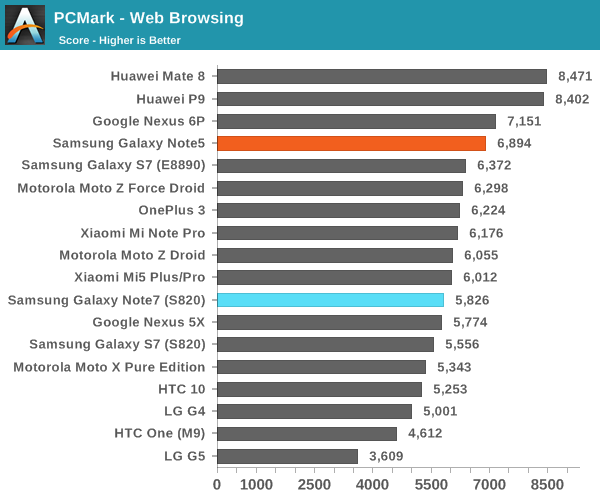
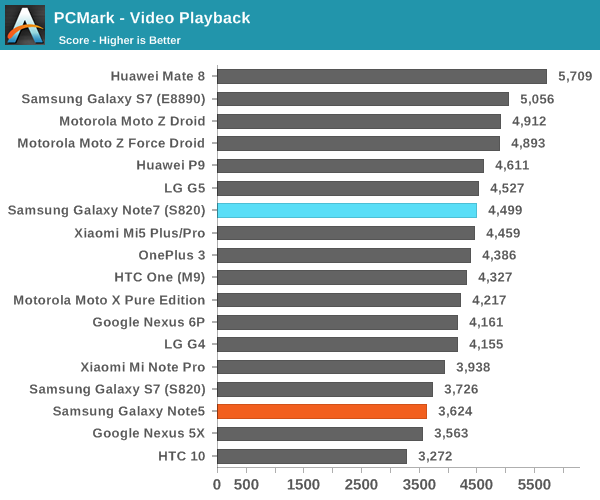
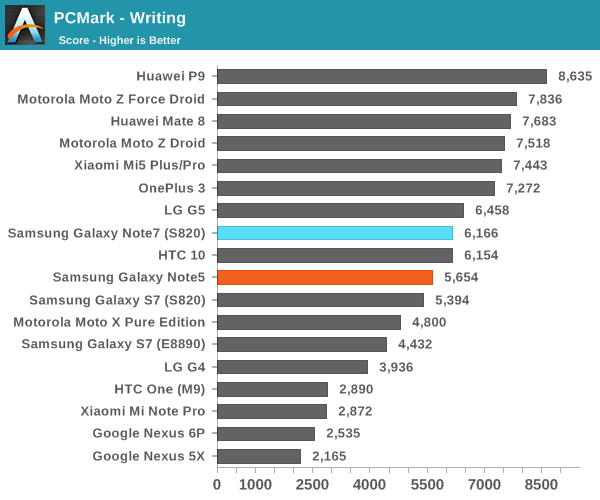
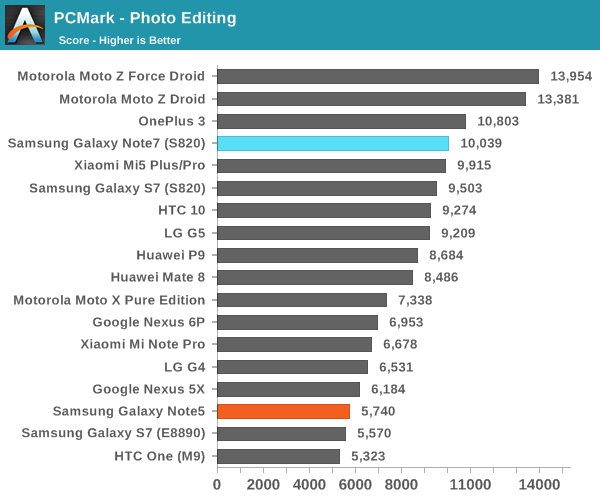
Again, performance is in line with expectation in PCMark, although there are some improvements here and there that are primarily centered about web browsing performance which is almost constantly being improved as developers figure out new optimizations for browsers. With that said we can move on to Discomark, which is a true high level benchmark designed to show exactly how quickly a suite of common Google and OEM applications load from NAND or from RAM.
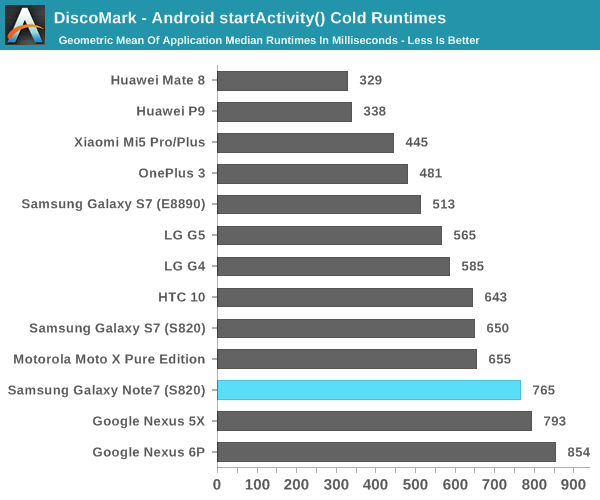
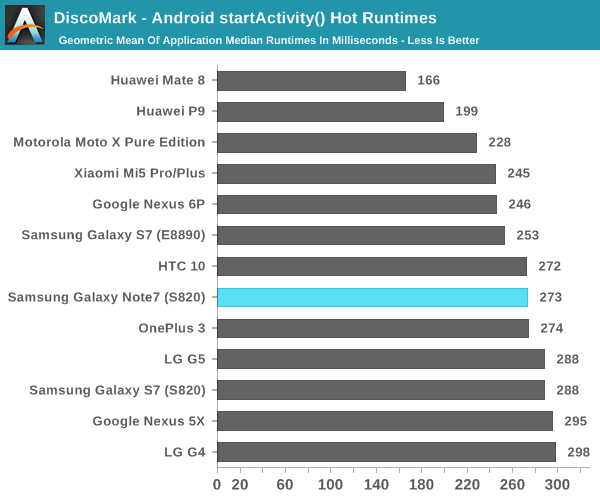
Here the Galaxy Note7 shows some improvement on hot runtimes relative to the Galaxy S7, but the cold runtimes have dropped for some reason. It looks like much of the delta here is due to Dropbox which is now running significantly slower on the Galaxy Note7. I suspect that this is related to possible changes in Dropbox or its interaction with TouchWiz rather than any significant underlying difference in system performance relative to the Galaxy S7. Overall, the Galaxy Note7 performs about where you'd expect from a Snapdragon 820 device from Samsung given the performance of the Galaxy S7.












202 Comments
View All Comments
JoshHo - Tuesday, August 16, 2016 - link
That is unlikely as the charging current is already limited if the screen is on with the Galaxy Note7 and S7.Tigran - Tuesday, August 16, 2016 - link
No throttling test?JoshHo - Tuesday, August 16, 2016 - link
Due to time constraints it couldn't be run. I will update the review when possible with the results as well as a pipeline post.vanilla_gorilla - Tuesday, August 16, 2016 - link
"My major complaint here continues to be a general lack of performance as things like scrolling don’t feel like they have the momentum or response that they should and I still see frame drops that don’t happen in comparable devices."How is this still possible?
damianrobertjones - Tuesday, August 16, 2016 - link
It needs another 8 CPUsshabby - Tuesday, August 16, 2016 - link
Because snapdragon, the s7 exynos version was smoother than the sd820 version.grayson_carr - Tuesday, August 16, 2016 - link
The SD820 actually has the power to run the UI more fluidly than the Exynos. The Moto Z runs extremely fluidly, even moreso than the Exynos S7. The problem is, Samsung optimizes the kernel / governor settings on SD820 devices more for battery life than for performance.arayoflight - Tuesday, August 16, 2016 - link
And yet the exynos destroys it in battery.grayson_carr - Tuesday, August 16, 2016 - link
Yeah. The Exynos is more efficient. But performance is still less than it should be because of Samsung's bloated software and prioritization of battery life. The Moto Z runs circles around the Exynos S7 in real world smoothness, even though the Exynos is a better chip than the SD820. Stop making this about Exynos vs Snapdragon. This is about Samsung's crappy software and optimization regardless of what chip is used.niva - Tuesday, August 16, 2016 - link
Ding ding ding, you said it. Samsung's bloated software.TouchWiz is an abomination that should be destroyed by fire. Each year they tout how amazing the new TouchWiz is going to be without telling you the performance penalty it brings. These overlays should only be allowed as apps that one can disable.
If say stick to Nexus devices but in this case it's the only good phablet and there are no nexuses with pen support. Suffer through TouchWiz is your only option